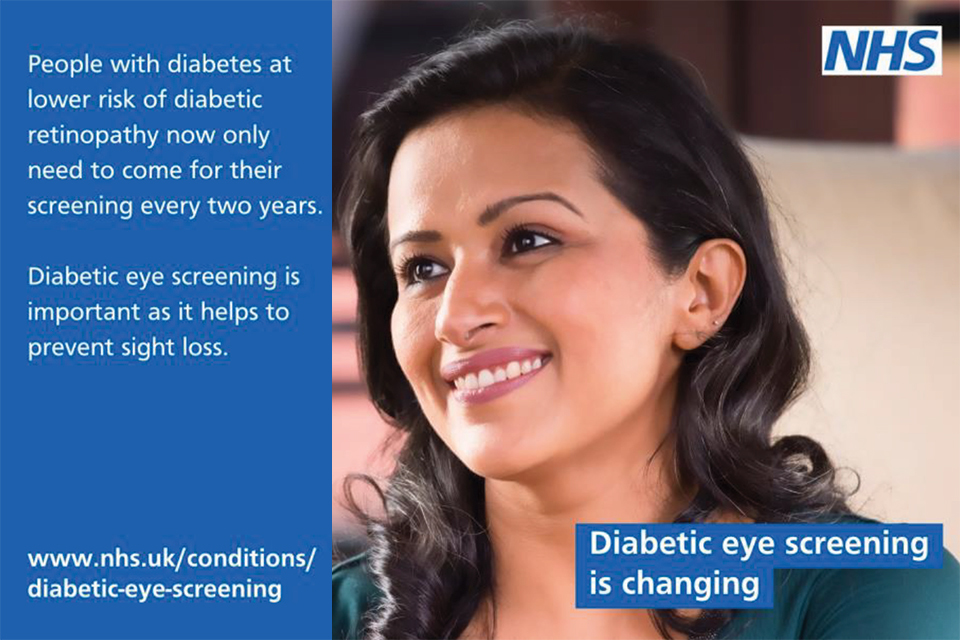
The NHS in England will this month start inviting people at lower risk of diabetic retinopathy for diabetic eye screening every 2 years instead of every year.
The rollout of the lower risk diabetic eye screening pathway is based on a recommendation from the UK National Screening Committee (UK NSC), the independent scientific committee that advises the UK governments and the NHS on all aspects of screening.
Diabetic eye screening helps prevent sight loss caused by diabetic retinopathy. Screening can detect the condition early before people notice any changes to their vision.
The UK NSC recommended changing diabetic eye screening appointments from every year to every 2 years for people at low risk because:
- a large study showed it was safe to invite people in this lower risk group every 2 years rather than annually
- it will help the NHS improve the service it offers by reducing the number of appointments people with diabetes at lower risk need to attend
This change has already been implemented in Wales, Scotland and Northern Ireland.
What is changing and when
From October 2023, people with diabetes in England aged 12 and over, who have had 2 consecutive eye screening tests showing no signs of diabetic retinopathy, will start to be offered screening every 2 years. Anyone at higher risk will continue to receive more regular eye screening.
The changes will be made gradually over a 2-year period. People with diabetes will now start to be informed of the change if they are eligible following their diabetic eye screening results.
Deborah Tomalin, Director of Public Health and Operations, NHS England, said:
This change is in line with the UK National Screening Committee’s recommendation and evidence that shows it is safe for people with no diabetic eye disease to be screened every 2 years. It is the culmination of a thorough implementation process carried out by the NHS.
Screening will now be more convenient for people at lower risk of diabetic retinopathy because of the reduction in the number of appointments they need to attend. Anyone who is concerned about changes to their eyesight should still contact their optometrist or optician straight away.
Esther Walden, Diabetes UK Deputy Head of Care, said:
Diabetes UK supports the changes being made to the eye screening programme for people living with diabetes in England, bringing it in line with the screening intervals for the other UK nations.
Eye screening can detect changes in the eye before any changes to vision are noticeable, and early treatment can help prevent sight loss, so we recommend everyone attends their eye screening appointment when invited.
More information about the implementation of the low-risk diabetic eye screening pathway in England can be found on NHS.UK and GOV.UK.
The UK NSC regularly reviews screening recommendations for more than 100 conditions. The introduction of the lower risk diabetic eye screening pathway is an example of the committee recommending an improvement to an existing screening programme in response to the latest evidence.
Keep up to date
We’ll post details of new screening seminars on this blog. You can register to receive updates direct to your inbox, so there’s no need to keep checking for new articles.